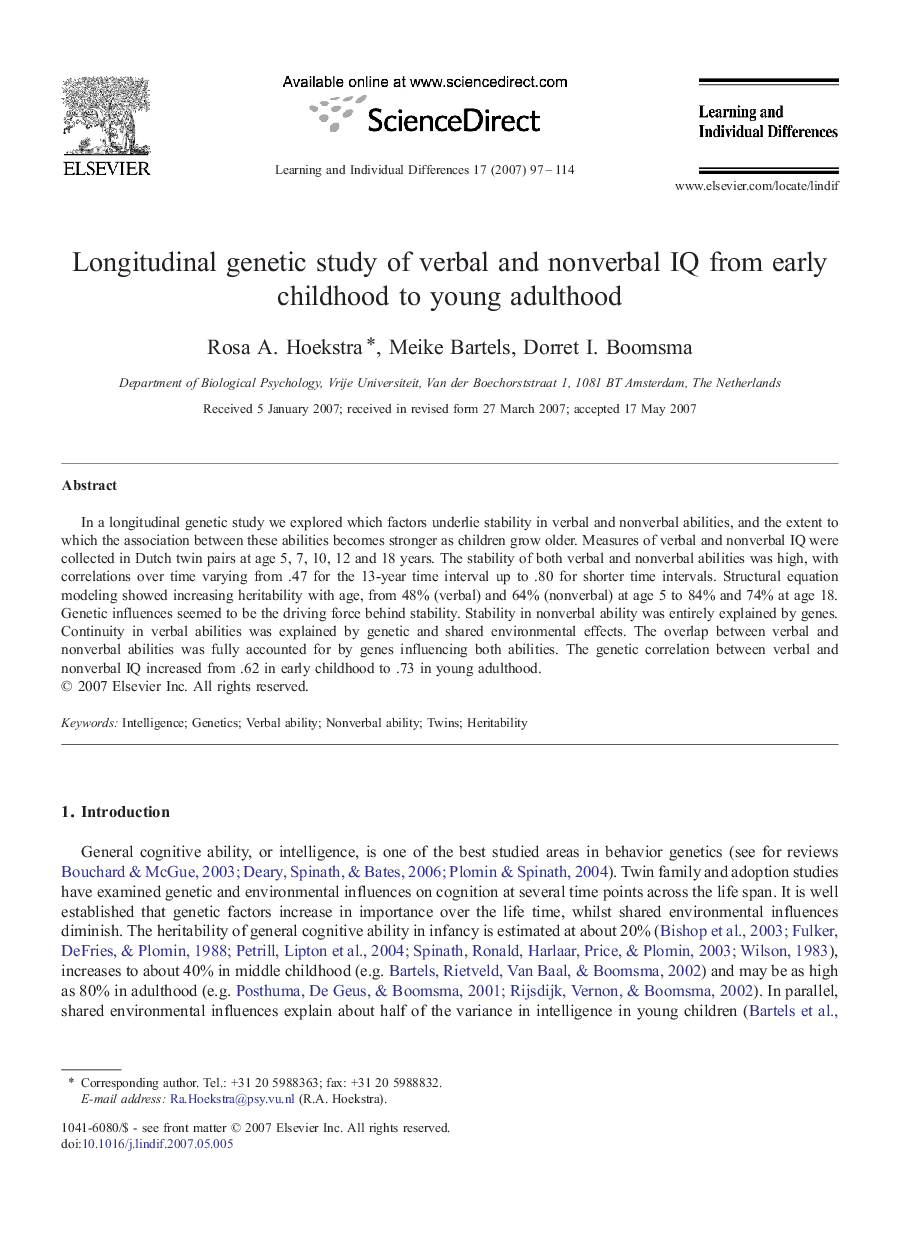| Article ID | Journal | Published Year | Pages | File Type |
|---|---|---|---|---|
| 365230 | Learning and Individual Differences | 2007 | 18 Pages |
In a longitudinal genetic study we explored which factors underlie stability in verbal and nonverbal abilities, and the extent to which the association between these abilities becomes stronger as children grow older. Measures of verbal and nonverbal IQ were collected in Dutch twin pairs at age 5, 7, 10, 12 and 18 years. The stability of both verbal and nonverbal abilities was high, with correlations over time varying from .47 for the 13-year time interval up to .80 for shorter time intervals. Structural equation modeling showed increasing heritability with age, from 48% (verbal) and 64% (nonverbal) at age 5 to 84% and 74% at age 18. Genetic influences seemed to be the driving force behind stability. Stability in nonverbal ability was entirely explained by genes. Continuity in verbal abilities was explained by genetic and shared environmental effects. The overlap between verbal and nonverbal abilities was fully accounted for by genes influencing both abilities. The genetic correlation between verbal and nonverbal IQ increased from .62 in early childhood to .73 in young adulthood.
